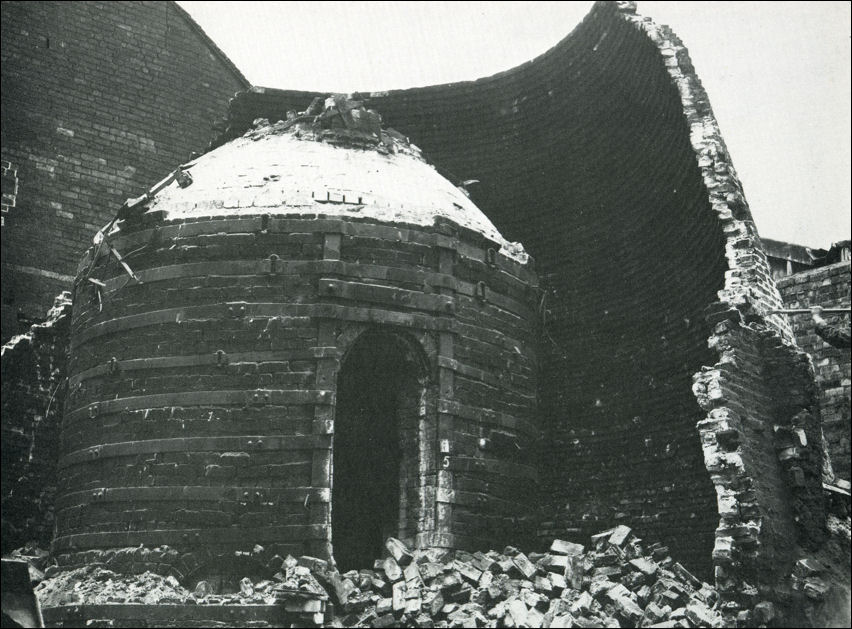![]()
|
|
|
|
|
Stoke-on-Trent - Potworks of the week |

the last bottle kiln to be
demolished at Copeland's Spode works - Stoke - 1960
photo: Warrillow collection
|
The inner part is the kin proper. It is a round structure with a domed roof, the CROWN, and its wall are approximately one foot thick. Iron bands known as BONTS, set about twelve inches apart, run right round the circular oven to strengthen it as it expands and contracts during the firing. A doorway, the CLAMMINS or
WICKET, surrounded by a stout iron frame and just large enough for a man
with a SAGGAR on his head to pass through , is built into the kiln.
POTTERY has been manufactured at Spode's Church Street site since around 1750, more than 10 years before Josiah Spode established his business in 1767. The success of the venture
meant Josiah was able to buy the Church Street factory from his former
employer, William Banks. The Prince of Wales visited the factory in 1806 and, impressed by what he saw, asked Spode to produce the banqueting service for his coronation as George IV. The company has held Royal Warrants ever since, and has also received commissions from the East India Company, Charles Dickens and the Shah of Persia. In 1867 the company's
official trade name was changed to WT Copeland and Sons, only reverting
back to Spode in 1970.
All these coal fired kilns
have now been demolished © The Potteries Museum & Art Gallery |
|
|